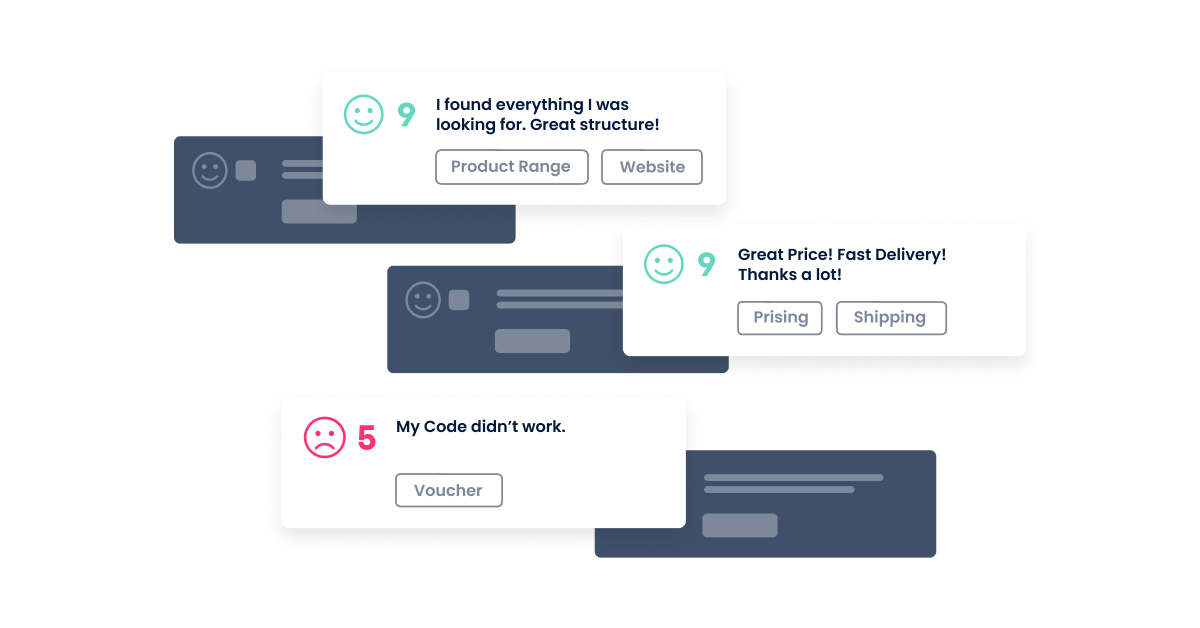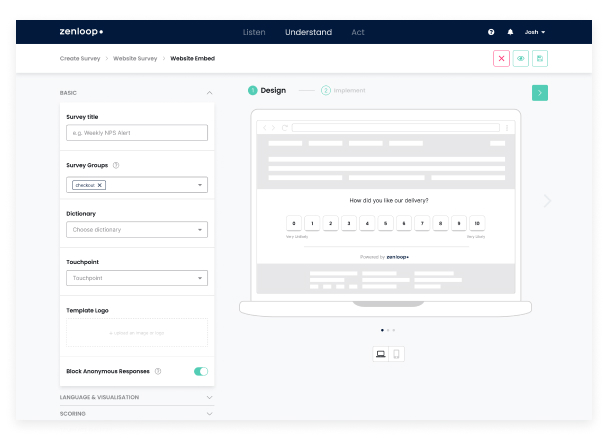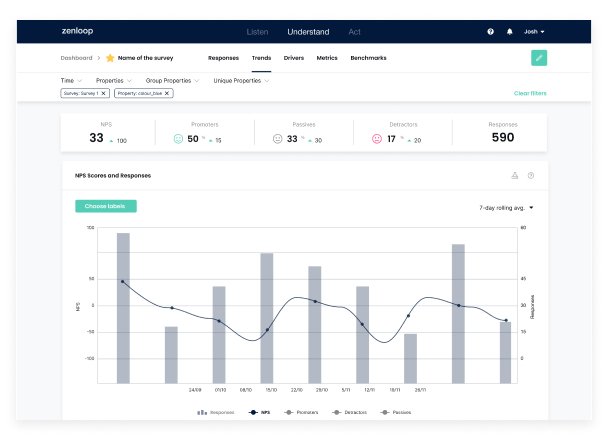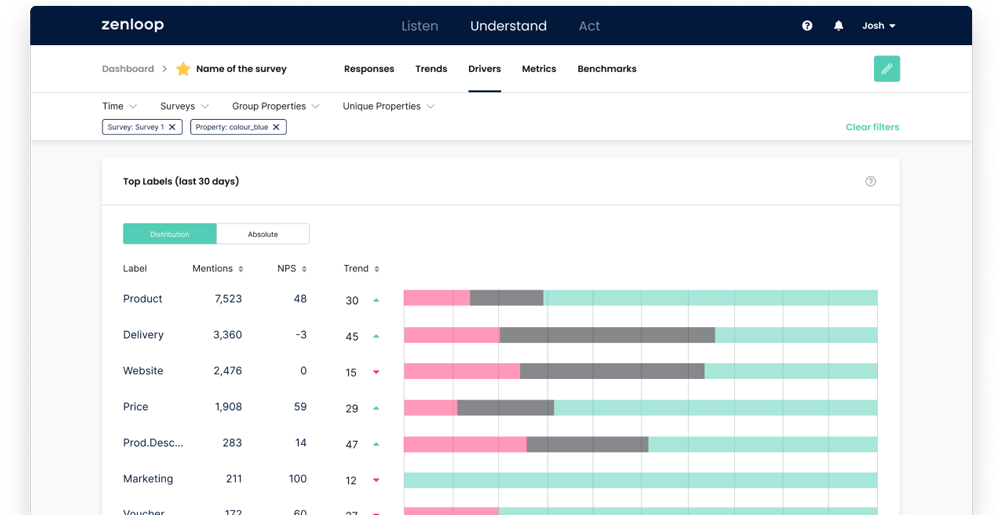Feedback Software
Types, Advantages, and Long-Term Benefits
Asking doesn’t cost a thing – more and more companies have recognized this and are increasingly interested in the needs of their customers. Surveying of one’s own customers can uncover important potential and help better understand them and their needs. Rapid digitalization and its endless possibilities poses challenges – but also opportunities – for many companies, especially regarding the design of their customer relationships.

Communication channels that were considered trendy only a few years ago are now regarded as snail mail. Companies are required to continually adapt their business model to new technologies and react quickly to customer feedback. Within seconds, dissatisfied customers can trigger a shitstorm on social networks and blogs. But that doesn’t have to happen – there is already a wide range of professional survey tools on the Internet that companies can use cheaply or even free of charge. Not only do they collect large amounts of data, but they also provide a detailed evaluation in practically no time.
But what exactly makes online survey software the popular all-around choice in customer surveying? How can surveys be created using such feedback software? What exactly is behind the various applications of smart feedback software? What are their long-term benefits?
What is Feedback Software?
Customer feedback software helps organizations interact with their customers across active support channels. It collects feedback and suggestions from emails, calls, chats, and online surveys and brings it all together in a central location. The feedback is thus available as a kind of knowledge pool to all company departments and can be used for their strategic objectives of management, marketing, sales, or other departments involved in customer contact. By bringing feedback together in one central location, companies save time, which they can instead invest in targeted customer relationship management.
Further Reading:
What Types of Survey Softwares are There?
Survey software is currently popping up like mushrooms. With such a wide selection, it is not always easy to find the right provider for your individual needs. But before companies get lost in the software jungle, they should clarify in advance what information they want to ask their customers. After all, only those who have a content guide and implement it effectively will ultimately benefit long-term from the results of their surveys. If the questions to be asked have already been formulated, it is often easier to decide on the right survey software. The customer’s views and habits also play a role in the selection of a provider. Are customers primarily active in social networks or blogs? Then you can for example use your own built-in survey tools on Facebook or Twitter.
Whilst a variety of survey software can be used for free, some vendors limit their offerings. Depending on the intensity of use, the number of questionnaires or answers, this may still incur costs for the company. The service providers in the software sector often offer an individual price package, specially tailored to your company‘s needs.
Once the right software has been found, it is time to implement it. Most professional survey tools are similar in their basic functions and main features. The focus should be on making the surveys easy to create and use. Questionnaires can usually be conveniently created online. The user chooses the desired design from a variety of templates and thus creates the questionnaire piece by piece with just a few clicks. HTML or programming skills are not necessary requirements.
1. Creating a survey
For survey creation, feedback software usually has different types of questions:
- Evaluation questions
- Prioritization questions
- Open, semi-open, or closed questions
- Single or multiple selection questions
On request, the type and number of questions can be used to refer to the participant’s previous answers. Since many companies operate in international markets, many software vendors offer their survey tool and templates in different languages.

2. Sharing surveys
Companies can then share the survey with their customers in several ways:
- Via an integrated link on websites or in emails
- By email invitation or reminder in a selected mailing list
- Integrated into social networks or blogs, for example on their Facebook page
- By widget or i-frame placed on the company’s website
- As a handout with online access data
3. Analyzing Feedback
Results can be downloaded as often as desired during the entire survey, for example in CSV format. For evaluation, the data can also be imported into applications such as SPSS or Excel. Some vendors provide an automatic analysis tool for evaluation. The software evaluates the data in real-time and transfers it into charts. It is also possible to filter or search responses by a specific category. Companies can check the current status of their survey at any time. Our integrated experience management platform zenloop automatically evaluates customer feedback and offers sentiment analysis, smart labels, and a 24/7 live feed.

Advantages of NPS®-Methodology over Other Survey Methods
The commonality of feedback software lies in revealing invisible thoughts and opinions about a company at the touch of a button. While some companies create online surveys themselves, others rely on well-defined survey types. They usually calculate a key figure from all the answers, which can be used as a benchmark. Well-known metrics include Customer Satisfaction Score (CSAT), Net Promoter Score® (NPS), and Customer Effort Score (CES). NPS methodology has made a name for itself among survey software. But what are the benefits of the Net Promoter Score compared to other survey methods such as CES or CSAT?
Short and Direct Surveys
NPS surveys are based on only one question: “How likely is it that you would recommend our company/product to a friend or acquaintance?”. In an open answer field, the customer is asked to justify his answer. NPS surveys are therefore not only direct, but also short and yet meaningful. Completion usually takes less than five minutes. Thanks to these short response times, customers are also more willing to participate in the survey several times. Over time, this data can be compared and seasonal trends identified.
Easy Analysis and Individual Customer Approach
The evaluation of the survey data is done automatically. NPS software then divides participants into three categories based on their responses: Critics, passives and promoters. This enables companies to target their customers depending on the group. Critical voices can be used, for example, to solve problems, and advocates can be used for successful referral marketing.
Holistic Significance
The Net Promoter Score provides information about the customer’s general state of satisfaction. After all, you only recommend a product or service if you are really satisfied. In this case, the customer looks more at the overall impression than at a certain situation. As a key figure, the NPS is thus valuable not only for individual departments but also across the organization. However, it can also be used at specific touchpoints and provide information about selected aspects along the customer journey.
Meeting Forecasts for the Future
In addition, the Net Promoter Score provides information about how likely a customer is to continue to buy from a company. These statements are worth their weight in gold to predict a brand’s business growth or health forecasts. At the same time, answers from open questions indicate a concrete need for action. They provide important information on which processes in the company still have deficits and where there is room for improvement. Like a compass, if interpreted correctly they can show your company the way to success.
Easy Benchmark with Competitors
The Net Promoter Score is an international metric that makes it easier for companies to compare themselves both globally and regionally. This puts the NPS well ahead of the CES and CSAT methodology. While the Customer Effort Score indicates how much effort customers need to invest to meet their needs, it does not provide helpful benchmark data to compare with other industries or regions. Companies can also use the CSAT methodology to draw validated industry or country comparisons. The reason for this is the time of the survey, which relates exclusively to the past interaction between customers and companies.
Why Companies Should Invest in Survey Software
NPS methodology is all well and good – although many companies have already discovered the benefits of an NPS survey, they are still reluctant to invest in professional software. Survey software offers numerous advantages:
Easy installation
The NPS software is installed directly on the website. Programming skills are not required. Furthermore, the surveys can be adjusted and changed individually – and within a few minutes. It is often enough to personalize the standard NPS question. Individualized questions often achieve a particularly high response rate, as the customer feels personally addressed and valued.
24/7 availability of data
Following the installation, employees have round-the-clock access to the survey via the dashboard. The survey results can thus be called up individually and at short notice by employees across departments. Often, feedback is also visible in the form of 24-hour live feeds around the company. This is how entrepreneurs gain and keep an eye on their customers.
Fully automatic collection and evaluation
In the past, employees from the respective divisions – such as sales or marketing – had to review the results individually and evaluate their content. The feedback software frees them from these time-consuming small tasks. Incoming responses are automatically flagged and can be categorized and tagged. An analysis tool then automatically generates reports based on categories, keywords, or clusters. In this way, open feedback can be systematically evaluated and made visible in diagrams.
Resource savings and optimized customer service
If the additional efforts of manual sorting, summarizing, and evaluating data is removed, new-found freedoms are made. Employees have their workloads reduced and can use their time, energy, and talent for other tasks, such as personal interaction with the customer for the development of product improvements and new features. In addition, costs are saved in the long term, as survey feedback software is significantly cheaper to carry out than commissioning a call center.
Analysis of large amount of data
No limit in the survey size – using survey software offers the possibility to collect and analyze large amounts of data. When evaluating the results from the open answer field, the software uses automatic pattern recognition: smart labels automatically identify and categorize incoming comments. In this way, many different answers can be automatically analyzed and translated into action-relevant feedback.
Identification of critical topics by an alarm system
Much survey software is equipped with an alarm system. Critical messages appear as a pop-up on the computer of the responsible employee. Automatic alerts via email or through integrations such as Slack, Zendesk, or others can also be set up. Problems can be quickly identified and improvements in the customer’s interest can be initiated immediately. In this way, professional complaint management can be implemented.
Use Survey Software Correctly
According to Handelsblatt, only 13 percent of all companies operate systematic customer recovery management. This was the result of a telephone survey of 300 German company executives. According to the survey, 48 percent of the companies surveyed have never made use of planned measures to recover customers. Feedback software can provide valuable support for recovery management – from each response, the feedback software filters out the main information and categorizes the comments. Since customer feedback is done in real-time, the response times are correspondingly short. The company can respond directly and individually via email if a customer is dissatisfied or wants to be contacted. At the same time, selected feedback can be forwarded to the appropriate department.
This aspect is essential for sustainable emotional customer loyalty. When companies do not content themselves with the pure feedback query but close the feedback loop, a positive impression is created among customers.
Asking the customer, showing understanding of their problems, and offering them solutions is definitely worthwhile. If companies target critics, they can not only avoid an exodus – with a little patience, critics even become loyal fans.
Companies that invest in survey software can therefore respond quickly and specifically to customer requests, thus making their customers happier in the long term. In addition, feedback software enables permanent monitoring of customer relationships and provides necessary data for strategic decisions. After the implementation of the software, the company can develop step by step in a customer-oriented manner.
Summing Up: Survey Software Offers a Wide Range of Possibilities
Survey software enables companies to gather customer feedback in a resource-efficient way. There is a wide range of survey types, different channels, features, and applications. All software programs have one thing in common – large amounts of data can be collected and evaluated automatically and can be accessed by the entire company at the touch of a button. NPS survey software, in particular, is of increasing importance in the software market: their results have a general meaning, provide information about future trends, and have the possibility to compare with other companies. In the long run, it is worth it for companies to invest in such software, as it facilitates work processes and enables professional customer experience management.
Convert feedback with zenloop






